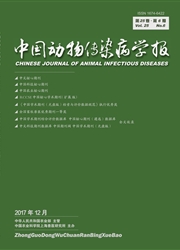

 中文摘要:
中文摘要:
病毒感染哺乳动物细胞过程中,病毒复制产生的基因组或病毒蛋白激活先天性免疫信号通路后,产生干扰素的同时诱导干扰素下游基因表达,促进细胞的抗病毒反应。与此同时,病毒感染宿主细胞还能引起胞质颗粒的聚集,其成份大多为核糖核蛋白,RNA结合蛋白、翻译起始因子等,这个聚集区域被称之为应激颗粒(stress granules,SG)。先天性免疫通路和SG都是宿主细胞对病毒感染的一种抵抗性反应,而与之相对,一些病毒却通过抑制SG和先天性免疫通路的形成来促进自身复制。由于SG中包含RNA结合蛋白以及一系列病毒或宿主的RNA,而先天性免疫中识别病毒RNA的模式识别分子也能特异性结合病毒RNA,那SG如何协同先天性免疫在宿主抗病毒中发挥一定的作用,本文就SG在病毒感染诱导的先天性免疫中的作用进行简要综述。
 英文摘要:
英文摘要:
In the course of virus infection, virus genome and protein produced by virus replication initiate innate immunity signaling pathway, leading to interferon secretion and interferon stimulate gene expression and ultimately establish an antiviral state. Meanwhile, virus infection also induced stress granule(SG) containing ribonucleoprotein, RNA binding protein and eukaryotic initiated factors, etc. Innate immunity and SG are both cellular antiviral response. Correspondingly, virus promotes its own replication through inhibit SG formation and innate immunity. SG contains RNA binding protein and a series of virus or host RNA, while the molecular associated to innate immunity such as pattern recognition receptor also specifically recognize virus RNA, indicating their close relationship. This review will focus on the strategies how SG and innate immunity collaboratively exert antiviral function.
 同期刊论文项目
同期刊论文项目
 同项目期刊论文
同项目期刊论文
 期刊信息
期刊信息
